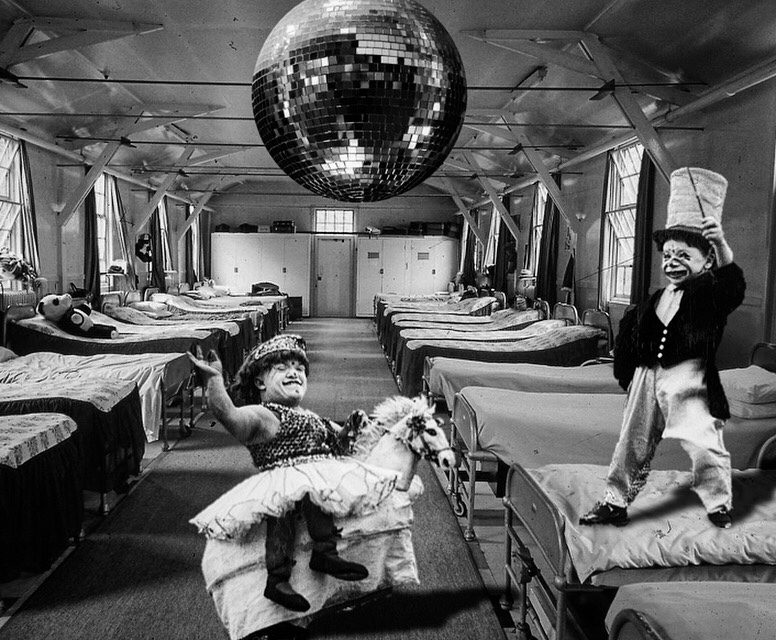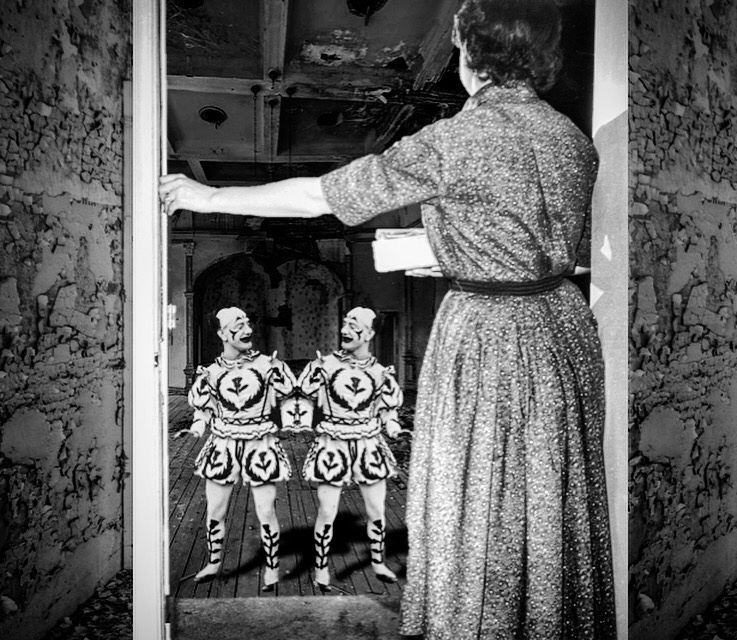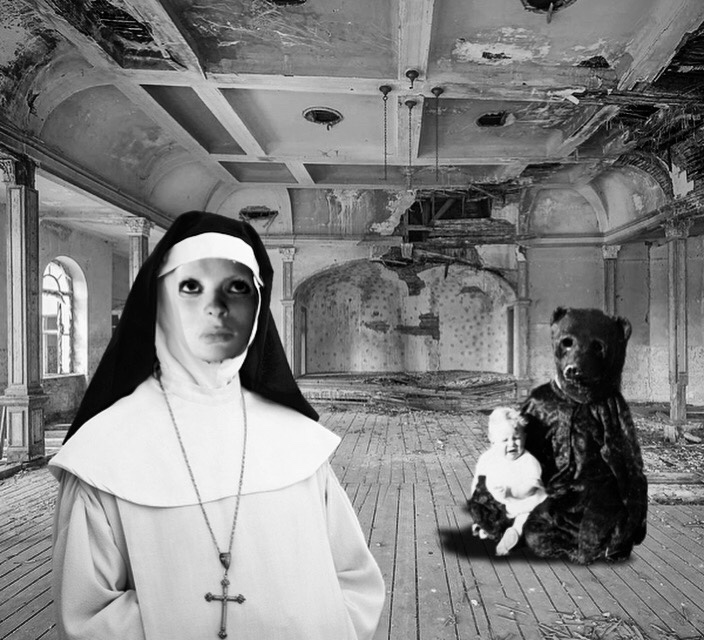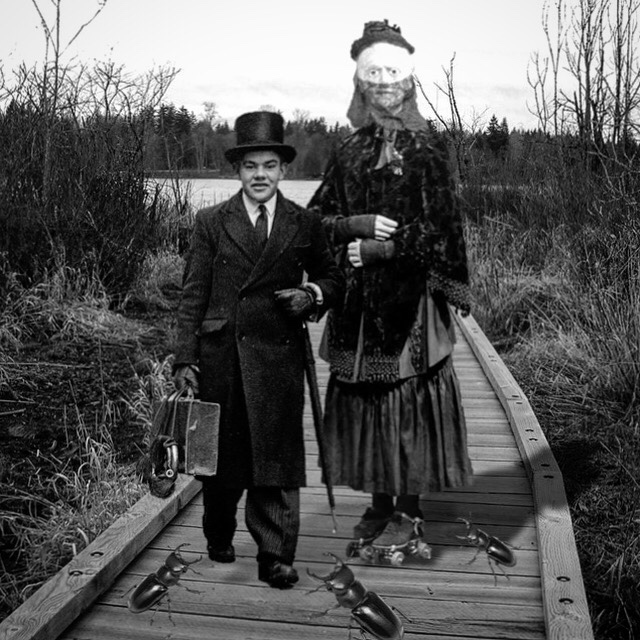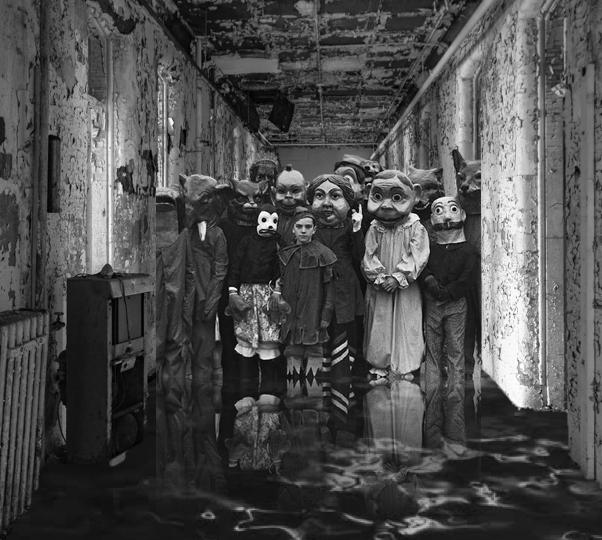
Whilst the nuns of Everbleak were hardly known for their ‘welfare’ or kindness, they did allow Sylvan Kane to open an orphanage in 1913. Although he asked for children to be accompanied by donations, many were allowed to stay on a charitable basis. In the early days, however, they were immediately put to work in the kitchens, gardens and laboratories to ‘earn their keep’.
Everbleak also had several children’s wards that became especially popular with middle-class families who could combine treatment of their mentally-troubled offspring and ‘little freaks’ with an Atlantic Ocean vacation. They would abandon them in the gloomy entrance hall at the start of the week, then return with tans, straw hats and a relaxed disposition on Sunday afternoon. Kane was quick to market these ‘Cure-cations’ in periodicals and journals, along with other toothsome (largely cocaine-based) children’s tonics and cordials.
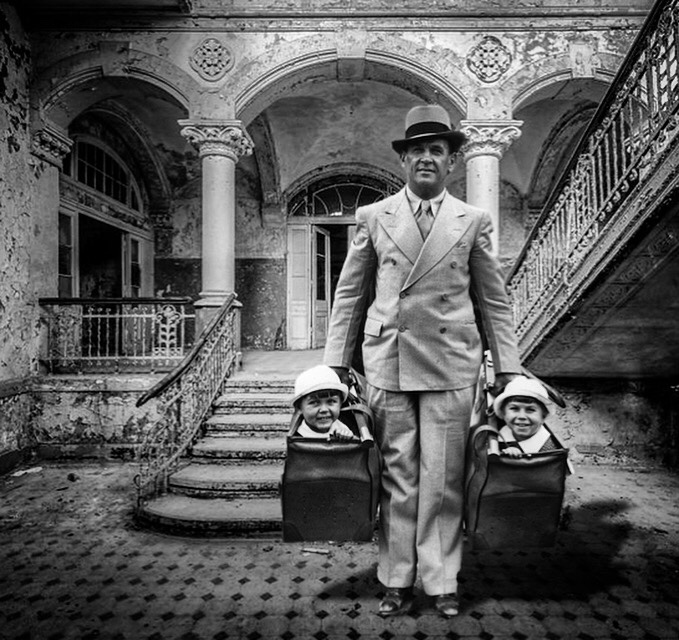
The nuns were terrible at organising games, so the children would invent their own entertainment. Some of it was absurdist, and some of it was downright dangerous or distasteful. ‘Sack Back’ or ‘Pin the dwarf-sack on the alpaca’ was a self-explanatory game for children old enough to be able to contain a struggling dwarf within a hessian laundry bag. ‘Nun and Run’ simply involved knocking or ripping the wimple from a nun and retiring to a safe distance. However, it was usually repaid with solitary confinement or a light beating, so was usually done in a crowd, or from behind, with pre-planned escape routes. ‘Dead Head’ was an outdoors game where a child was forcefully buried up to its neck in the sand dunes for dogs to urinate on. ‘King Dead Head’ was a popular variant where a mackerel or crab ‘crown’ was placed upon the head for ravenous seagulls to feast upon (usually resulting in injury and stitches).

The children were also allowed to form their own houses / factions, each with its own complicated membership rules and initiation ceremony. Some onlookers would simply describe them as ‘gangs’ though. ‘The Circx’ were a loose alliance of miscellaneous circus children and orphans. ‘The Tiny Terrors’ were a thuggish (and dangerous) troupe of midgets and dwarfs. ‘The Stonewalls’ were Southern confederates, and mostly orphans of fallen soldiers. And ‘The Nations’ were a motley crew of sideshow freaks and various other ‘abominations’ that their name was derived from. Despite all the rivalry and loyalties, they were mostly unified in their hatred of clowns and nuns (apart from The Circx, who had a few child clowns amongst their ranks).

Education was left in the care of the nuns – or not at all. For those with the mental capacity or desire to learn, lessons focused on basic arithmetic and reading, along with practical skills such as shiv-making (a nun speciality), wilderness survival, and woodcarving.










